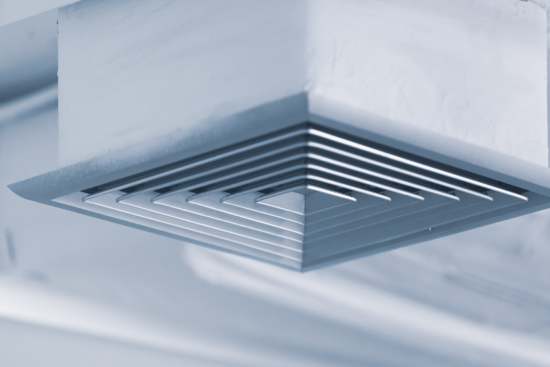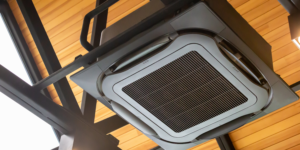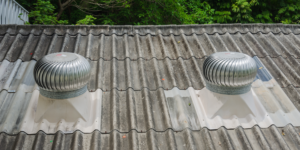© All Rights Reserved | Roof Replacement and Repair - Zaman Roofing LLC. | Website Design & CT SEO Powered by High Point SEO CT
- Google Rating5.0Based on 33 reviewsZaman Roofing - CT Roofing Contractors & Roof Repair5.0Sergey Y."Zaman Roofing” recently completed a roof replacement project in our condo complex, and we are extremely satisfied with their service. From start to finish, their team demonstrated professionalism, efficiency, and exceptional craftsmanship. They were prompt in their communication, providing detailed explanations and answering all our questions. The crew arrived on time, worked diligently, and completed the project within the estimated timeframe.Not only did Zaman Roofing exhibit outstanding technical skills, but they also ensured minimal disruption to our daily activities. They took great care to protect our property, cleaning up thoroughly each day and leaving no trace of debris behind.The quality of the new roof is outstanding. Zaman Roofing used top-grade materials and paid attention to every detail, resulting in a sturdy and visually appealing finished product. The roof has significantly enhanced the overall appearance of our condo complex.We would highly recommend Zaman Roofing to anyone in need of roofing services. Their professionalism, expertise, and attention to customer satisfaction make them a reliable choice for roof replacements. We are grateful for their excellent work and would not hesitate to hire them again in the future.Christopher Z.Zaman Roofing was AWESOME!!!! This is my third time doing a roof in CT on my third home and Zaman did an outstanding job on my rather unique roof line. They even replaced a skylight. I needed a Roof Contract in place before insurance would allow the purchase because the seller was a DeeBag. Zaman worked with my realtor, banker, etc and even waited patiently while the seller delayed the process by 4 months. The week I closed, Zaman Roofing was up and at em. Stripping, prepping and replacing. In and Out. Property was nice and clean after the work was complete. I would highly recommend.Steve TZaman Roofing, located in Berlin, CT, truly excels in providing top-notch roofing services. I am absolutely thrilled to give them a well-deserved 5-star review for their outstanding work. They have proven themselves as experts in roofing Berlin CT, and I couldn't be happier with the results.When it comes to roofing in Berlin, Zaman Roofing stands out from the competition. Their team of skilled professionals demonstrated exceptional attention to detail during the installation of my new roof. They meticulously handled every aspect of the project, ensuring both aesthetics and durability were top-notch.What impressed me the most was Zaman Roofing's commitment to customer satisfaction. From my initial contact with them, they were responsive, courteous, and eager to understand my specific roofing needs in Berlin. Their exceptional customer service throughout the entire process made me feel valued as a client.Zaman Roofing's expertise in roofing Berlin is truly commendable. They have an extensive portfolio of successful projects throughout Berlin, CT, showcasing their skill and knowledge in a variety of roofing styles and materials. Regardless of the complexity of the job, they have the necessary resources to deliver exceptional results.I cannot emphasize enough how satisfied I am with Zaman Roofing's services in Berlin, CT. Their professionalism, reliability, and dedication to their craft are unparalleled. If you're searching for exceptional roofing services in Berlin CT, Zaman Roofing is the company to choose. They will exceed your expectations in every way.In conclusion, Zaman Roofing unquestionably deserves a stellar 5-star rating for their exemplary roofing services in Berlin, CT. Their expertise in roofing Berlin and roofing Berlin CT shines through in their exceptional workmanship and customer service. I highly recommend Zaman Roofing for all your roofing needs.Gary G.Zaman replaced the roof on my 2,200 sq. ft. colonial in 2015. The workmanship was perfect. Unfortunately, over time, the top-of-the line shingles discolored. He was totally supportive in getting the manufacturer to replace them at no cost to me. He just replaced the roof with the new shingles. It was another perfect job. It was completed in one day. The crew was great and they cleaned the area spotless.Chris DWe used Zaman Roofing for our Roof and Gutter Replacement, I acquired 5 quotes for the work and found Zaman to be the most reasonable, it was a Good Decision to choose Zaman Roofing, Seweryn was Professional in every aspect and the Clean-up was nothing short of Amazing, I would Highly Recommend using Zaman RoofingRobert D.Excellent Service and Value - great crew and easy to deal with - highly recommended !Sunghoon P.Great work and reasonable price. I am so happy with their service. I asked a bunch of questions before and after the service and his responses were very prompt and straight to the point. Highly recommend.Adrienne M.I am so pleased that I used this company. My new roof looks fantastic. Such a hard working crew. Seweryn was informative and professional. Price was very completive. Don't hesitate to use them you will be very satisfied. Highly recommend!Nancy M.Good communication, timely response and knowledgeable. Very happy with our experience and highly recommend this company.Beata M.We used Zaman for our roof replacement recently and are very pleased. They replaced our roof in one day and gave us a very competitive quote. Good quality of work. Highly recommended.Lori K.They were here when they said they would. Professional & left everything neat ,cleaned up everything. They were in & out in a day & a half. Would recommend Zaman roifing.Dan R.A+ service, professional and quick response time.Anna G.Zaman and his crew provide great workmanship they installed new roofs they take great pride in the work they do. They were punctual and did a amazing job with the roof installation and clean up. Highly recommend Zaman Roofing to family and friends. Thank you for the opportunity to work with such a amazing contractorScott M.Awesome contractor, I would highly recommend him to family & friends. Seweryn & his crew were here on time & worked diligently. They were the happiest workers I've ever dealt with (I am a former construction project manager with the Federal government). Any & all questions were answered. My neighbors couldn't believe they finished the job in one day & complimented how great the new roof looks.Clement D.Great roofing contractors. I love to recommend it to my friends and family.Karen 9.With the quality, price, timeliness, all round nice guy and great crew, Zaman Roofing LLC is what other companies aspire to be.... Clean, helpful and a pleasure to recommend....james C.Excellent experience from start to finish, all appointments and work times met in a timely fashion, workmanship and clean up left nothing to be desired.Would be a definite recommendation, very pleased.Margaret B.I had obtained multiple quotes and did my due diligence research and Seweryn Zaman came back with fair price and good recommendations. He was professional, explained everything that he was going to do and never once he rushed me during decision process. He showed up on time with his hard working crew and finished my roof in one day. I was amazed with his crew who worked like busy bees. Very impressed with the clean up process and the end product. Two months after he finished my roof he was still helping me deal with the insurance company making sure I had everything I needed. Thank you SewerynSteve B.Very professional and easy to work. The crew came in, replaced my roof and then cleaned up everything! Highly recommended.Jim O.Competitive quote among four others. Seweryn Zaman provided larger color samples of the shingle colors we were interested in. He obtained the building permit, showed up on the day expected with his entire crew. Our older roof was on 24" trusses and needed more plywood replaced than anticipated. He got the additional sheets replaced on the day of the re-roofing. The crew worked with him late until the job was done and picked up every piece of old debris. The roof passed final town inspection with no concerns. Zaman Roofing is easy to deal with; he's responsive on text messages and phone calls. I used them in the past for an emergency repair and he found a well-hidden leak from the builder.Dale C.The crews did a good job, and the leader of the crew did a great job when they replaced the roof of my house in Farming on 7/6&7 this year. When they worked on the project, they worked professionally and in detail. We are very pleased with the work they have done, and highly recommend people to have the company worked on their roof projects.Forrest B.Zaman's was very professional, excellent quality of work and very responsive to our needs. This roofing experience was excellent from start to finish and provided an excellent value. Would certainly recommend them to any friend.Yonatan M.We used Zaman Roofing to replace our roof in 2019 and could not be happier with the service and product. A highly professional company and great personal interaction with the owner. The workers took great care of our landscaping, and the owner was there frequently to supervise the work and take care of finishing touches like flashing the chimney. We have had zero issues since then and highly recommend this company.Quinn V.Zaman was awesome. He was communicative, on-time, and was able to give me a quick inspection of our roof despite the rain. I rarely have a contractor tell me that I didn't need to spend any money, but Zaman told me my roof was fine for the next several years.magdalena K.We recently used Zaman Roofing to replace our 26-year-old roof. Right from the start they were great! Sevy was extremely professional and knowledgeable and gave us a great quote. Everything was done as they described and the final project looked great. The owner was on the job from start to finish as he promised.Ariadna G.Our experience with Zaman Roofing was excellent. I was very impressed with both their work and their customer service. Seweryn was very knowledgeable and professional.Larry G.What a wonderful business. Very responsive. They showed up exactly when expected, completed the project quickly and accurately and left no trace after clean up. All with a very competitive price. I would highly recommend Zaman to anyone looking to have roofing work done.STEVE R.I was very pleased with the roof and gutter repairs performed by Zaman Roofing on two of my buildings. Good workmanship and fair prices, I would recommend and use again.Danielle D.These guys stripped and reshuffled my roof is 1 day! They did an awesome job. Roof is beautiful. He uses a dump trailer which is great and they cleaned up well. Very happy with the work. Also pricing was fair.

Does Your House Need Air Flow Through the Roof?
Category: Roof Maintenance • December 15, 2023
Breathe in. Breathe out. Breathing fresh air is energizing. Do you ever consider your home’s air quality? Clean your house and open some windows, but what about airflow? That’s right! Even your humble home needs it—especially the roof! We will explain why and how to create optimum house airflow for a healthy living environment. Get ready to breathe fresh air as we explore roof ventilation!
Importance of Proper Air Flow in a House
Proper airflow is crucial for a comfortable and healthy home. Open windows and a summer breeze come to mind when we think of airflow. However, effective airflow requires more than opening windows.
Air circulation in your home regulates temperature, humidity, and scents. It inhibits moisture buildup that causes mold and structural damage. Proper ventilation removes allergens, VOCs, and carbon dioxide, improving indoor air quality.
Effective air flow also boosts home energy efficiency. Allowing fresh outdoor air to circulate effectively reduces cooling and heating system use, saving you money on utility bills.
Whether you want a healthier house or to save money each month, improving airflow should be a focus. Don’t ignore this simple yet vital factor that improves your health!
Signs That Your House May Need Better Air Flow
Is your home stuffy and uncomfortable? It may indicate poor airflow in your home. Look for these signs:
- Stale or musty scents: Poor air circulation may cause these smells. Odors can linger without proper airflow.
- High humidity: It might make your home feel moist and uncomfortable. Mold and furniture damage can result from poor airflow.
- Unequal temperature distribution: Do some rooms feel much warmer or cooler than others? Inadequate airflow may cause hot or cold areas throughout the house.
- Lingering allergens and pollutants: Poor ventilation lets dust mites, pet dander, and pollen build indoors, causing allergies and respiratory difficulties.
- Window condensation: Warm, moist air condenses on cool surfaces like windows. Increased condensation implies insufficient ventilation and high humidity.
If any of these indications apply, act! Maintaining a comfortable and healthy home requires proper air movement.
Common Causes of Poor Air Flow in Roofs
Roofs are commonly disregarded for airflow in homes. Poor roof air flow can cause energy waste, moisture buildup, and roof damage. Understanding the major reasons of inadequate roof air flow can help you find and fix problems.
Blocked ventilation systems often produce poor roof airflow. If your roof vents are clogged or too small, they won’t circulate fresh air throughout the attic. Stagnant air can raise temperatures and moisture.
Poor roof airflow may be caused by inadequate insulation. Without insulation, hot or cold outside air might enter your attic and interrupt your home’s airflow. This might cause uneven temperatures in your home and make it harder for your HVAC system to keep it pleasant.
Poor chimney or vent pipe installation or sealing can also hamper roof ventilation. These areas can let precipitation and vermin into the attic and obstruct airflow if not sealed properly.
Overgrown trees near the roofline might also block wind from traveling over your property. Trimming branches that block this airspace improve circulation and prevent stagnation.
How to Improve Air Flow Through Your Roof
Proper airflow can improve home comfort and energy efficiency. This includes good house and roof ventilation. The indicators of inadequate airflow in your home may indicate that it’s time to enhance it.
There are various ways to improve roof airflow. First and foremost, check vents for debris and insulation. Ridge and soffit vents can also help fresh air enter and hot air depart continuously.
Another effective airflow improvement is adding an attic fan. To prevent heat from entering the house, attic fans remove surplus heat. This can reduce summer cooling expenditures.
Attic insulation is also important. Insulation controls temperature and prevents heat movement between indoors and outdoors. Insulation helps maintain pleasant temperatures and improves airflow.
Maintaining roof airflow requires regular maintenance. Heavy winds or storms might produce blockages or damage. These concerns must be addressed immediately to avoid larger issues.
Beyond comfort, improving roof air flow improves indoor air quality and reduces moisture collection that can lead to mold growth.
Remember that proper venting systems, installation methods, insulation levels, and other variables must work together to improve roof airflow and create a healthy home environment!
Benefits of Proper Air Flow in the Home
Proper air movement in the home is helpful and necessary for your family’s comfort and health. Mold, mildew, and other pollutants can grow in a house without enough airflow.
Clean indoor air is a major benefit of appropriate airflow. Windows and vents provide fresh outdoor air into your home while the roof lets stale inside air out, removing dust, smoke, pet dander, and volatile organic compounds. This can considerably lessen asthma and allergy symptoms.
Good airflow regulates temperature. In the summer, a well-ventilated roof keeps heat from entering living spaces below. Poor ventilation in winter can cause humidity and rotting wood or insulation.
Optimized airflow reduces HVAC system strain and energy costs. Hot air trapped in your attic without ventilation channels or roofline vents makes your cooling system work harder.
Finally, increased airflow reduces moisture buildup, which prematurely deteriorates roofing materials.
Tips for Maintaining Good Air Flow in Your Roof
- Clean your roof regularly: Remove leaves, branches, and filth. This will prevent them from blocking air vents and ventilation.
- Trim overhanging trees: Overgrown trees obstruct roof airflow. To improve roof airflow, trim any branches near the roof.
- Install a ridge vent: This continuous strip along the roof peak lets hot air escape and draws in fresh air through soffit vents. This keeps the attic well-ventilated.
- Insulate properly: To reduce summer heat accumulation and winter heat loss, insulate your attic. Insulation optimizes temperature regulation and reduces condensation.
- Install exhaust fans in bathrooms and kitchens to reduce humidity and moisture. High humidity can cause mold, which impedes ventilation.
- Check for leaks: Leaks and water damage can threaten roof structure and airflow, so inspect your roof often.
- Schedule routine maintenance checks: Engage a roofing contractor for comprehensive roof system inspections, including vents, seals, flashing, and other components essential for airflow.
Keep your roof well-ventilated to minimize mold growth, structural damage, and energy loss.
Conclusion
Airflow in your home is important. It is essential for a comfortable, healthy, and energy-efficient home. You can increase roof ventilation by recognizing inadequate airflow and understanding its sources.
A well-ventilated roof keeps your home cool in summer and prevents moisture buildup that can cause mold and other structural problems. Install vents or exhaust fans and clean your gutters to improve airflow throughout your property.
Maintaining roof airflow requires regular maintenance. Schedule annual inspections with professionals who can spot issues early. Additionally, clean or replace HVAC filters periodically and check for ventilation obstructions or damage.




